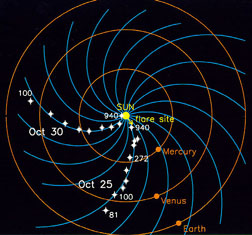The IMF is represented by the blue arcs in the picture above. This picture shows the spiral nature of the IMF.
Click on image for full size
NASA
IMF
IMF stands for Interplanetary Magnetic Field. It is another name for the Sun's magnetic field.
The Sun's magnetic field is huge! It goes beyond any of the planets. The Sun's magnetic field got its name because of that. We call the Sun's magnetic field the Interplanetary Magnetic Field meaning it has all of the planets within it.
The magnetic field of the Sun is carried by the solar wind which comes out from the Sun. The solar wind and magnetic field are twisted into a spiral by the Sun's rotation.
Eventually the solar wind and IMF encounter interstellar space. The boundary between space dominated by the Sun (or the heliosphere) and interstellar space is called the heliopause.
You might also be interested in:
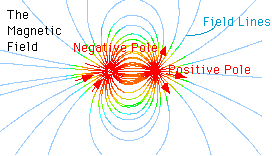
The force of magnetism causes material to point along the direction the magnetic force points. As shown in the diagram to the left, the force of magnetism is illustrated by lines, which represent the force.
...more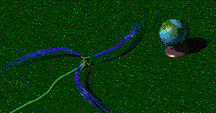
The solar wind is formed as the Sun's top layer blows off into space, carrying magnetic fields still attached to the Sun. Gusts form in the solar wind associated with violent events on the Sun. Particles
...more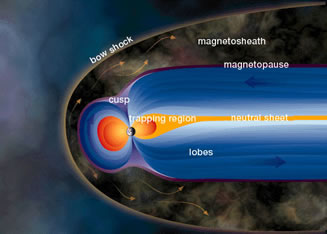
Motions within Earth's metallic core generate the planet's global magnetic field. This magnetic field extends beyond Earth's surface and atmosphere into the space surrounding our home planet. The interaction
...more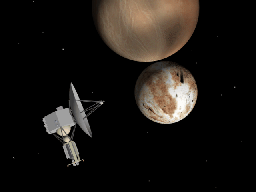
AU stands for Astronomical Units. It is a useful way to measure the distances in interplanetary space. It is the distance between the Earth and the Sun, which is about 93 million miles. For reference,
...more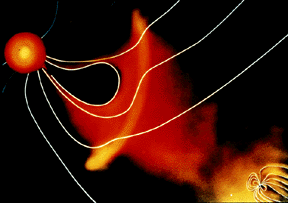
For a planet to be affected by a blob of material being ejected by the sun, the planet must be in the path of the blob, as shown in this picture. The Earth and its magnetosphere are shown in the bottom
...more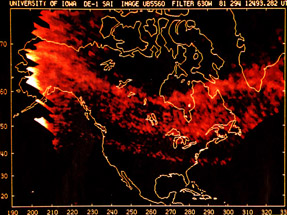
The aurora we are most familiar with is the polar aurora. This is what people are talking about when they say the northern or southern lights. But there are other less-known aurora, such as SAR arcs.
...more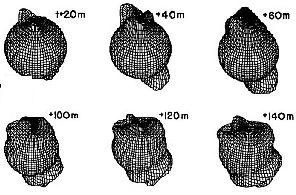
This figure shows the effect of the aurora on the atmosphere. When FAC's enter the atmosphere and create the aurora, they heat the atmosphere suddenly and abruptly. This creates an impulse which travels
...more


